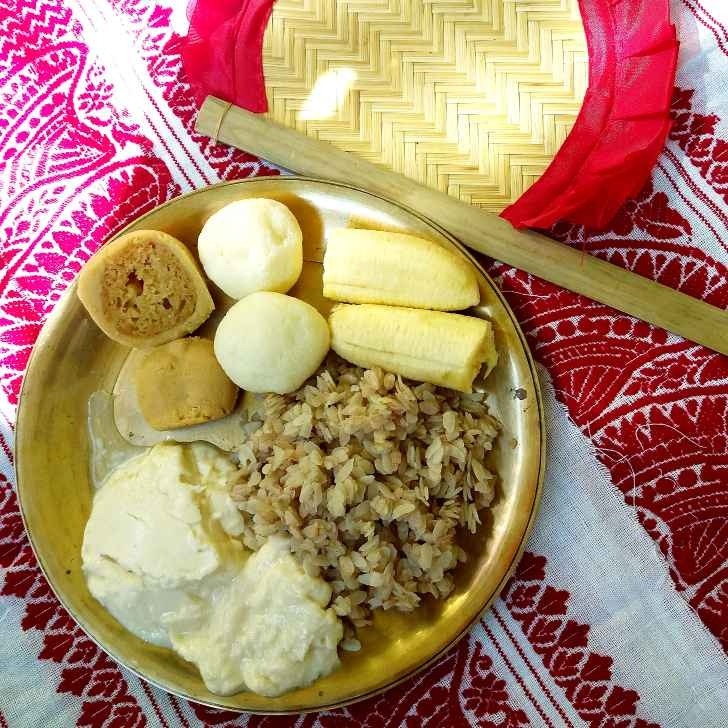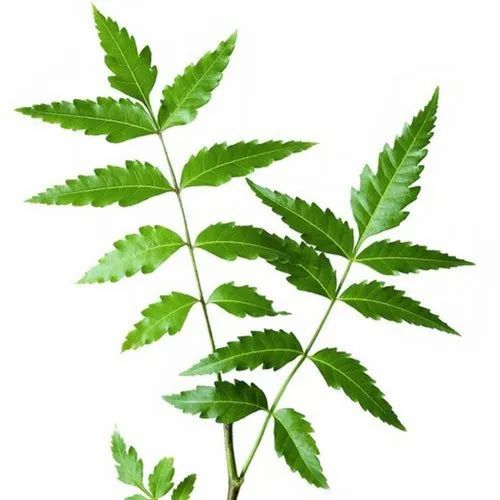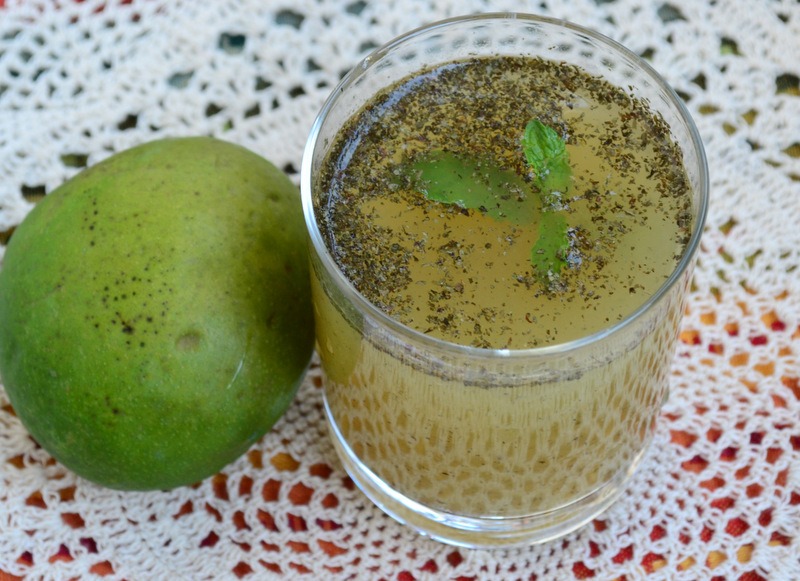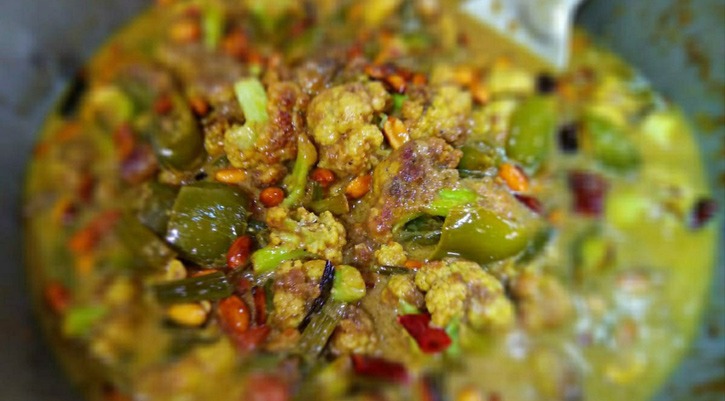About The Author
Hello! From Chuchura (in Hooghly District) and a foodie, I created this blog with a mission to preserve the food of the land; with a message to encourage and promote clean and real food. I hope you enjoy and gain out of this blog, happy reading!
Looking forward to read and hear your feedback.
শুভ চৈত্র সংক্রান্তি
শুভ নববর্ষ
শুভ পয়লা বৈশাখ
Once upon a time in Bengal, every Sankranti was observed and celebrated.
Unfortunately, that is no longer the case now and today Bengalis largely observe two Sankranti – they are Chaitra Sankranti and Paush Sankranti.
Chaitra Sankranti was celebrated grandly in the yesteryears.
There was no fixed date for celebrating the Bengali New Year – it was celebrated on the day of the beginning of the farming season and everyone in the village celebrated the day by offering prayers and feasting together.
On the day of Chaitra Sankranti no fish or meat was served.
The men folk would cast their nets in the neighborhood ponds and catch fish, which was cooked and kept to be eaten the next day – called Poyla Boisakh (or the first day of Baisakh month).
In the evening, housewives would leave a small amount of rice in a pot of water, soak it overnight and put a tender mango branch in it.
On that very night of Chaitra Sankranti, everyone would eat bitter food, even if it was in small quantities. It was just a symbol of starting life anew the next day, forgetting the pains and sorrows of the year gone by.
On Poyla Boisakh or Pohela Boisakh, people would wake up before sunrise and the grihini (woman head of the family) of the house would distribute the soaked rice among the members. This was called “Amani” and was considered to bring peace to the household.
As the members ate the soaked rice, she would use the branch (dipped in the water last night) to sprinkle water on everyone. And this is how a new year was welcomed.
This blog is to explain the grandeur of Chaitra Sankranti and how food played an important role in the various rituals and celebrations that happened…once upon a time in Bengal!
Breaking the Fast in the Morning
Fruits were eaten in the morning and hence this meal was termed as “phalahar” or fruit-based diet.
A very common way of consuming fruit was to mix it with buckwheat or flattened rice. It was customary to add curd, banana and sandesh.

Apart from this, there was a trend of making a kind of naru with chhatu (Bengal gram flour) and akher gur (sugarcane jaggery).
Consuming Bitter Food on Chaitra Sankranti
In our culture, bitter and astringent food is encouraged during summer.
It is considered that bitter and astringent food helps to recover from illness and nourishes the body with good health by increasing its immunity.
Neem Leaves
Stir frying neem leaves in ghee and eating with rice is a very old custom that goes back ages. Many consider that eating this would keep one in good health throughout the year.

Bitter Dal & Shukto
Bitter dal is also a very common dish on this special day. Alternatively, many also cook shukto (a well-balanced bitter Bengali mixed vegetable preparation) which is considered better-flavored dish than bitter dal.
Sojne Chorchori or Dish Made of Drumstick
On Chaitra Sankranti, many kitchens cook a drumstick based curry with mustard paste and vegetables like potato. This is also served to special guests who would come home for lunch.

Shakanna
Shakanna is formed out of two words – “shak” meaning leafy greens and “anna” meaning food. Shakanna literally translates to leafy greens cooked as food.
On the day of Chaitra Sankranti, this was once celebrated across rural Bengal.
In the morning, the wife of the house would pick leafy greens from the swamps, jungles and bushes around the house.
As per the ritual, it must not be cultivated but foraged from around the house. Not from within the house, but around – like roadsides, along the fields, etc.
That is, the leafy greens that no one planted but grew by itself – all naturally!
The other rule was that you cannot uproot the whole plant, you can only collect the leaves – leaving the rest of it to grow and propagate (reproduce) as per the laws of nature.
Fourteen different types of leafy greens would be sought, picked, washed and cleaned and then cooked.
Today this ritual is followed in very limited areas of rural Bengal.
Significance of Consuming Chowdoh Shak or Fourteen Different Leafy Greens
Consuming fourteen types of vegetables in Chaitra Sankranti is actually seeking the welfare of all kinds of plants and animals.
The wisdom of the women folk is also at test here. This is passed down from one generation to the other, or learnt through conversation among the women folk of the village.
The number ‘fourteen’ is symbolic and if the women could get more, it is better. However, getting fourteen different leafy green is a challenge today.
Farmers and the people believed that to protect agriculture, an ecological balance has to be maintained. And in no way should farming practices harm the ecology.
Hence, while a farmer takes care of his crop and the cultivable land, the women folk was also expected to be observant about the non-cultivable land.
Hence this ritual of eating fourteen different leafy greens was initiated.
Being able to collect fourteen leafy greens or herbs will mean that the ecological balance is maintained and that farming practices have not impacted the nature.
Gima Shak or Indian Chickweed
This is a bitter-tasting green that is cooked by the women folk along with brinjals and served to the fasting women of the house.

Vegetable-based Dishes
Vegetable curries cooked on this day is always without onion and garlic.
The fries include brinjal, leafy greens, bitter gourd, etc. And curries are prepared from both vegetables and leafy greens.
A very special dish cooked on the day of Chaitra Sankranti is raw jackfruit curry (echorer torkari in Bengali).
Flat beans (shim) are forbidden.
Sherbet of Chaitra Sankranti
Every house would prepare a special sherbet on this very day.
Barley flour, milk or curd, roasted Bengal gram flour (chhatu) was mixed with the bael fruit. This was served to family members and guests alike.
Another drink that was prepared on this day is aam pora shorbot.

To prepare aam pora shorbot, raw mangoes with the peel on is smothered in an open fire and allowed to cool. Then it was mashed with fingers and the pulp was separated from the seed. This was mixed with water from a pitcher and spices were thrown in. The drink provided much relief from heat.
Taltala Shirni – Shirni Made Under Palm Trees
Every village had a shirni festival on the last day of the Bengali annual calendar or Chaitra Sankranti.
The young boys went door to door in the village and collected rice, milk and jaggery. These were all carried to the tallest tree of the village and cooked under it, where the villagers all gathered to savor it.
Since palm trees were the tallest trees in almost every village, the custom and the food came to be known as Taltalar Shirni or shirni made under the palm tree.
Charak Pujo & It’s Food
Depending on the region within Bengal, Charak Pujo is celebrated either on Chaitra Sankranti and/or a few days before it.
It was worshiped in hopes of getting children, getting rid of incurable diseases and fulfilling the desires of the heart.
A few days before the pujo, the devotees used to observe vows and abstinence.
Fairs called Charaker Mela would be held at several places and different food items would be available like items made of puffed rice, coconut, sesame seeds and jaggery.
Sweet items like rosogolla, gawja, and sweets shaped like temple, house, elephant, horse, deer, birds, mango, jackfruit were available.
Breaking Fast with Dates
In many villages, the women folk would fast, gather around a specific date palm tree and offer milk and coconut water as a means of worship.
Once this was completed, the leader among the monks (sanyasi) would join his hands, whisper a prayer to the date palm tree and climb atop it.
As the sanyasis standing below danced, the leader on top of the tree would pluck and throw dates down below.
As the women folk broke their fast by drinking the date palm sap, these dates would be collected and relished.
Pajon or Panchon
A major dish that was considered as a traditional food of Chaitra Sankranti is Pajon.
Centuries back it was cooked with 108 different ingredients but now it has reduced to 20-25 ingredients.

Ingredients of Pajon included herbal leaves, roots, stems that were found in the vicinity of the house and forests. It also included vegetables that were readily available in the summer like spiny gourd, bitter gourd, pointed gourd, brinjal, papaya, plantains (raw banana), snake gourd, pumpkins and long beans.
This completely vegetarian dish is garnished with roasted coconut flakes, sugarcane jaggery and roasted beans.
এর মধ্যে নিম পাতাভাজা, শুক্ত প্রধান। ঘিয়ে ভাজা নিমপাতা দিয়ে গরম ভাত, সঙ্গে আলু, কুমড়া, পটোল, বেগুন, করলাভাজা—এ পাঁচ রকমের ভাজা, ঢেঁকিশাক, পাটশাক, গিমাশাক, বথুয়াশাক, থানকুনি শাক ভাজা, ডালের বড়া মেশানো শুক্ত, এগুলো চৈত্রসংক্রান্তির একেবারে ‘ট্রেডমার্ক’ খাবার। খেয়াল করলে দেখবেন, এ খাবারগুলোর কয়েকটি তিতা স্বাদের। ধারণা করা হয়, তিতা খাবার শরীরের রোগ প্রতিরোধ করতে সক্ষম।
Last Words
Poyla Boisakh was not celebrated as grandly as it is celebrated now.
In the era gone by, the Bengalis would eat “panta bhat” or fermented rice for lunch. In drinks, “bael sherbet” was common to beat the summer heat.
With time, much has changed.
In our culture where we say “baro maashe tyaro parbon” or thirteen festivals in twelve months, wishing Happy Bengali New Year and celebrating it with grandeur marked by cultural rootlessness (following customs defined by the West) has become the thirteenth festival.
There is nothing wrong with celebrating the new year, only that the simple cultural and spiritual exchange that was an integrated part of the festival have been long lost.
শুভ চৈত্র সংক্রান্তি
শুভ নববর্ষ
শুভ পয়লা বৈশাখ



ekhon besi sakpata khele liver betray korbe
ekhon darkar gile khaoa. chewing cholbe na time nei
tongue r test darkar Khao resturant er khabar
finally foodie tumi sudhui moody